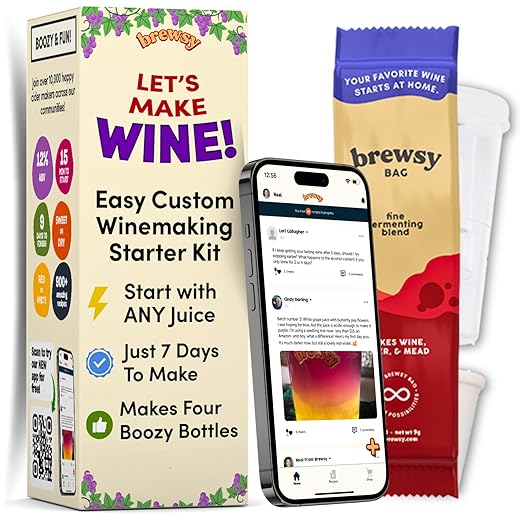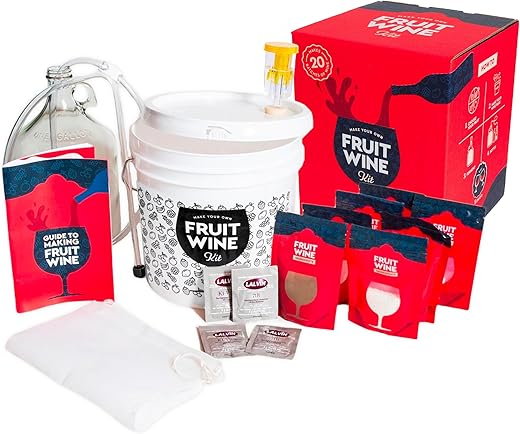









Uncorking the Art of Wine Making: A Comprehensive Guide to Wine Making Kits
Wine making, often romanticized as an age-old craft, has evolved into an accessible hobby for many. Whether you’re a seasoned sommelier or a curious novice, a wine making kit can be your gateway to creating delicious homemade wine. But what exactly is a wine making kit, and how can it transform your living room into a vineyard? Let’s dive in!
What is a Wine Making Kit?
A wine making kit is a collection of tools and ingredients designed to help you produce wine at home. Think of it as a culinary kit for liquid grapes. Typically, these kits include fermentation equipment, a recipe booklet, and all the necessary ingredients, such as grape juice or concentrate, yeast, and additives. With a wine making kit, you can bypass the vineyard and produce a delightful bottle of wine right in your kitchen.
Why Choose a Wine Making Kit?
You might wonder, why should I invest in a wine making kit? The answer lies in the experience. It’s not just about the wine; it’s about the journey. Imagine the satisfaction of crafting your own cabernet or merlot. Plus, wine making can be a fun activity to share with friends or family. It’s like cooking, but instead of a meal, you’re creating a beverage that can be enjoyed for years to come.
Types of Wine Making Kits
When exploring wine making kits, you’ll encounter different types tailored for various preferences and skill levels.
Beginner Kits
If you’re just starting, beginner kits are your best bet. They usually include everything you need, simplifying the process. These kits often come with step-by-step instructions, making them perfect for those who may feel overwhelmed by the idea of wine making.
Advanced Kits
For those with a bit of experience, advanced kits offer more complexity. They may include additional equipment such as corkers and bottles, or even specialized ingredients for crafting unique flavors. If you’re ready to level up your wine making game, these kits can provide the creative freedom you crave.
Specialty Kits
Do you have a particular flavor in mind? Specialty kits focus on specific types of wine, such as fruit wines or sparkling wines. With these kits, you can experiment with different ingredients and techniques, much like a painter choosing a unique palette.
Essential Components of a Wine Making Kit
Understanding what’s inside a wine making kit can help you appreciate the process. Here are the essential components you’ll typically find:
1. **Fermentation Vessel**: This is where the magic happens. The fermentation vessel is a large container that allows yeast to convert sugars into alcohol.
2. **Airlock**: Think of it as the bouncer for your fermentation vessel. It allows gases to escape while keeping unwanted contaminants out.
3. **Siphoning Tube**: This tool helps transfer your wine without disturbing the sediment at the bottom.
4. **Bottles and Corks**: Once fermentation is complete, you’ll need bottles to store your wine. Corks are crucial for sealing in the flavor.
5. **Ingredients**: Grape juice, yeast, and additives like sulfites are the backbone of your wine. Some kits even include flavoring agents for a unique twist.
The Wine Making Process: Step by Step
Ready to get started? Here’s a simplified overview of the wine making process:
1. **Prepare Your Ingredients**: Start by sanitizing all your equipment to prevent contamination. This step is crucial, as it can make or break your wine.
2. **Mix Ingredients**: Combine the grape juice or concentrate with water and any additional ingredients according to your kit’s instructions.
3. **Add Yeast**: Sprinkle the yeast into your mixture. This tiny organism will be your best friend in the fermentation process.
4. **Ferment**: Seal your fermentation vessel with the airlock and place it in a dark, temperature-controlled area. This is where the yeast will do its work, usually taking one to two weeks.
5. **Siphon**: Once fermentation is complete, siphon the wine into another container, leaving sediment behind.
6. **Bottle Your Wine**: Fill your bottles, cork them, and store them in a cool, dark place. Patience is key here; let your wine age for a few weeks to months.
7. **Enjoy**: Finally, it’s time to savor the fruits of your labor. Pour a glass, sit back, and enjoy your homemade creation!
Common Mistakes to Avoid
Even with a kit, mistakes can happen. Here are a few pitfalls to watch out for:
1. **Skipping Sanitization**: Neglecting to sanitize your equipment can lead to unwanted flavors or spoilage.
2. **Ignoring Temperature**: Fermentation requires a specific temperature range. Too hot or too cold can affect the outcome.
3. **Rushing the Process**: Wine making is an art that requires patience. Don’t rush the aging process; great wine takes time.
Conclusion
Wine making kits offer a delightful foray into the world of viticulture, allowing you to create personalized wines that can impress friends and family alike. With the right kit and a bit of patience, you can craft wines that are not just beverages, but stories waiting to be told. So, why not take the plunge? You might just discover a new passion.
FAQs
1. How long does it take to make wine at home?
The total time can vary, but typically, the fermentation process takes about one to two weeks, followed by aging for several weeks to months.
2. Can I use fresh grapes instead of grape juice concentrate?
Yes, you can use fresh grapes, but the process becomes more complex, requiring crushing, pressing, and additional equipment.
3. Is wine making expensive?
The initial investment in a wine making kit can range from $50 to several hundred dollars, depending on the kit’s complexity. However, once you’re set up, the cost per bottle is often much lower than store-bought wine.
